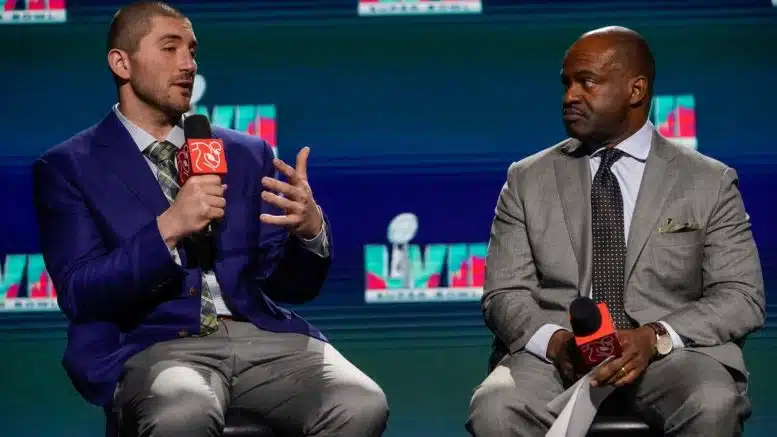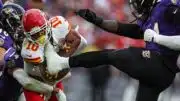This summer, NFL Players Association president J.C. Tretter’s ill-advised suggestion that running backs fake injuries to create leverage set off alarms around the league. On Monday, the NFL finally responded by filing an expected grievance against the NFLPA.
A few hours later, Cleveland Browns running back Nick Chubb’s reconstructed knee exploded into a million pieces on the field. The NFL could not have asked for worse timing. Since entering the league, Chubb has been one of the hardest humans to tackle between the tackles. And yet, he may be facing a grueling recovery.
At 40 years old, Aaron Rodgers will be playing quarterback with the New York Jets next season. The nature of the multiple tears 27-year-old Chubb suffered puts his future in peril. Meanwhile, Chubb was a national reminder of why running backs are acting out of self-preservation. Fortunately, the Browns running back was able to secure his contract bump, but 2024 will be a pivotal contract year. Even their franchise tag figures have increased by a smaller percentage than any other on the field including kickers over the past decade.
Every week, running backs are racing with a ticking time bomb in their knees, ankles, and feet, then slamming into a wall. Watching these running backs drop like flies is instilling an extremism in running backs eager to protect their livelihoods. When that happens, you end up with norm-shattering positions like the one Tretter took.
Running backs are a different breed. They endure ten times the rate of collisions than any other skilled position. And the NFL shows time and time again that their risks aren’t appreciated. Going as far as faking injuries is extreme, but there’s a middle road.
For running backs recovering from injury, they shouldn’t agree to touch a field until they are 100 percent. Not 90 percent or when the pain is manageable. Many of these runners play with a sense of pride and view themselves as gridiron gladiators. Playing through injuries is a part of the machismo, but there’s no valor in being told you’re fungible goods while sporting scars related to playing through pain. However, the NFL doesn’t respect running backs or their sacrifices.
Tretter’s job is to advocate for the players, but the images aired on NFL broadcasts do the job for him. His statements this summer got him in trouble, but maybe it’s time running backs start looking out for themselves first, and foremost.
This week, the Rams are holding out running back Cam Akers while packaging his contract to any interested franchises for delivery from the trading block. It’s the second time the Rams and Akers have done this dance. Two years ago, Akers returned from an Achilles he ruptured in July in time for the Super Bowl run. Now, in the final year of his rookie contract, the Rams are tossing him to the side like he’s a DiCaprio girlfriend turning 26.
On Sunday, Saquon Barkley twisted his ankle and will miss the next few weeks of football. He’s playing on a one-year deal after the Giants franchise tagged him, then awarded Daniel Jones with a multi-year extension.
Since July, the NFL’s best young running back, Jonathan Taylor has continued nursing an ankle injury he had surgically repaired in late January amid a contract dispute with the Indianapolis Colts and Jim Irsay. It’s impossible to tell if Taylor’s positioning on the PUP List is part of a tactic or a genuine injury. Because of Tretter’s comments, it’s hard to tell. But after watching the carnage inflicted on ball carriers, we’ll just take his word on it.
Original source here
#Running #backs #dont #fake #injuries #show #NFL #dangerous #jobs





